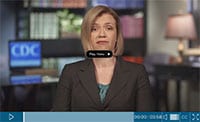Frequently Asked Questions About Shingrix
Shingrix is recommended to prevent shingles and related complications in immunocompetent adults 50 years and older, and for adults 19 years and older who are or will be immunocompromised. Make every effort to ensure that two doses are administered within the recommended 2–6 month interval. For immunocompromised adults, a shorter interval of 1–2 months can be followed if the patient would benefit from completing the series in a shorter period. If more than 6 months have elapsed since the first dose, administer the second dose as soon as possible. Do not restart the vaccine series.
- How should I administer Shingrix?
- Do I need to reconstitute Shingrix?
- Where should I store Shingrix?
- How many doses of Shingrix do I give?
- How long should I wait after giving the first dose of Shingrix to give the second dose?
- What should I do if a patient waits longer than 6 months to get the second dose?
- How long after a person received Zostavax should I wait to give Shingrix?
- How long after a person received chickenpox vaccine should I wait to give Shingrix?
- Can I give Shingrix with other adult vaccines?
- What is the guidance for vaccination with Shingrix during the COVID-19 pandemic?
- Can I give Shingrix at the same time as a COVID-19 vaccine?
Q: How should I administer Shingrix?
Q: Do I need to reconstitute Shingrix?
Q: Where should I store Shingrix?
Q: How many doses of Shingrix do I give?
Q: How long should I wait after giving the first dose of Shingrix to give the second dose?
Q: What should I do if a patient waits longer than 6 months to get the second dose?
A: You should give the second dose as soon as possible. However, you do not need to restart the vaccine series.
Everything You Need to Know About Shingrix
[3:58 mins]
Dr. Kathleen Dooling talks about storage, administration, and patient counseling for recombinant zoster vaccine for adults 50 years and older (2018 CDC recommendations for immunocompetent adults).
Released: 4/30/18
Q: How long after a person received Zostavax—a shingles vaccine that is no longer in use—should I wait to give Shingrix?
A: Studies confirmed that Shingrix was safe and immunogenic when administered 5 or more years after Zostavax. Intervals shorter than 5 years have not been studied. However, there are no data or theoretical concerns to indicate Shingrix would be less safe or effective when given less than 5 years after Zostavax. You may consider an interval shorter than 5 years, especially if your patient was >70 years old when they received Zostavax. Wait a minimum of 8 weeks after a person received Zostavax to give Shingrix.
Q: How long after a person received chickenpox vaccine should I wait to give Shingrix?
Q: Can I give Shingrix with other adult vaccines?
Q: What is the guidance for vaccination with Shingrix during the COVID-19 pandemic?
A: Shingles vaccination is an essential preventive care service for older adults that should not be delayed or discontinued because of the COVID-19 pandemic, unless a patient is suspected or confirmed to have COVID-19.* Healthcare providers and eligible patients should make every effort to ensure that two doses of Shingrix are administered within the recommended interval of 2 to 6 months. If more than 6 months have elapsed since the first dose, administer the second dose as soon as possible. Do not restart the vaccine series.
Counseling about potential side effects is especially important during the COVID-19 pandemic, since some shingles vaccination side effects** may be similar to symptoms of COVID-19. Before administering Shingrix, healthcare providers should counsel patients about the risk of self-limited vaccine-associated side effects and the appropriate steps to take if side effects occur after vaccination. Healthcare providers should also counsel patients to consider the timing of vaccination based on personal and professional commitments.
If a patient experiences side effects, any local (e.g., redness, pain, swelling at the injection site) or systemic (e.g., fever, chills, headache, body aches) reactions normally resolve within 72 hours after vaccination. Because of concerns about COVID-19, if a patient develops fever after vaccination, he or she should stay home until they have been fever-free for 24 hours without the use of fever-reducing medications. Shingrix does not cause respiratory symptoms common in COVID-19, such as cough or shortness of breath. If a vaccine recipient develops symptoms of COVID-19 (e.g., cough or shortness of breath), or if fever does not resolve within 72 hours of vaccination without the use of fever-reducing medications, the recipient should contact their healthcare provider. If a vaccine recipient develops emergency warning signs for COVID-19, emergency medical care should be sought immediately.
For more information, see CDC’s Vaccination Guidance During a Pandemic.
Q: Can I give Shingrix at the same time as a COVID-19 vaccine?
A: To learn more about COVID-19 vaccine coadministration with other vaccines, see Interim Clinical Considerations for Use of COVID-19 Vaccines and COVID-19 Vaccine FAQs for Healthcare Professionals.
*Healthcare providers should defer vaccination for patients with suspected or confirmed COVID-19, regardless of symptoms, until the patient has met the criteria for discontinuing isolation. While mild illness is not a contraindication to shingles vaccination, vaccination visits for these individuals should be postponed to avoid exposing healthcare personnel and others to the virus that causes COVID-19. When scheduling or confirming appointments for shingles vaccination, the provider’s office should instruct patients to notify them in advance if they currently have or develop any symptoms of COVID-19.
**In pre-licensure clinical studies involving 4,886 participants aged 50 and older who received Shingrix, the following side effects were reported after vaccination: myalgia (44.7%), fatigue (44.5%), headache (37.7%), shivering (26.8%), fever (20.5%), and gastrointestinal symptoms (17.3%) See the FDA prescribing information for additional information. In post-licensure safety monitoring of 38,902 reports to the Vaccine Adverse Events Reporting System through 22 October 2020, the most common signs and symptoms following Shingrix included: fever (23.9%), chills (20.5%), pain (20.1%), headache (19.1%), fatigue (16.4%), myalgia (11.4%), and nausea (10.9%) (October 2020 Advisory Committee on Immunization Practices presentation slides available at www.cdc.gov/vaccines/acip/meetings/index.html).

